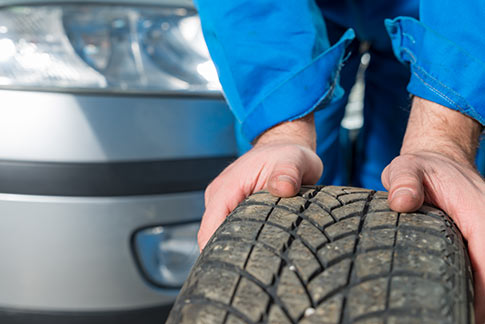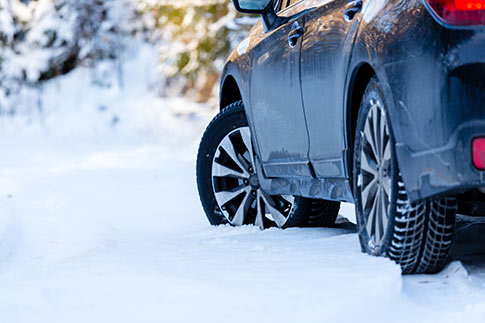Membership and connected space not available
Our membership registration and connected space will not be available December 14, from 8:30 p.m. to 11:30 p.m. because of systems maintenance. We apologize for any inconvenience.
A buying guide to winter tires

Winter tires are essential for optimal traction on snow and ice, better cornering stability and effective braking. Thinking about buying new winter tires? Here’s what you need to know to make an informed choice.
Winter tires in Quebec: A requirement by law
In Quebec, all passenger vehicles on the roads must be equipped with certified winter tires from December 1 to March 15. These tires are identifiable by the three-peak mountain and snowflake symbol. Drivers who fail to comply face a fine of $200 to $300.
Good to know: Beyond the legal deadline, it’s primarily the weather conditions that dictate when to make the switch. CAA‑Quebec recommends installing winter tires as soon as the thermometer approaches 7°C for several consecutive days.
When should you buy new winter tires?
Tread wear is the number one criterion for changing tires—not your budget. Legally, the minimum tread depth is 2/32" (1.6mm). However, CAA-Quebec recommends beginning the winter months with at least 6/32" for optimal safety.
You can measure tire wear with a 25-cent coin. If you can see the caribou’s nose, tread wear is critical and the tire needs replacing. Take measurements at three locations: inside grooves, centre and outside grooves.

“For a more precise check, nothing beats a tread-depth gauge. It’s affordable, easy to use and more accurate than a coin. You can find one at the CAA-Quebec Boutique.”
Sylvain LégaréResearch Analyst, Mobility, CAA-Quebec
How to choose the right winter tires for your vehicle?
Before buying your tires, take into account these three essential criteria:
1. Your driving style and your routes
A precise analysis of your needs will help you choose tires perfectly adapted:
Do you drive mostly in town or in the region?
Do you face more ice, mud or snow?
Do you need studded tires for snow and ice traction?
On what road surface do you most often drive?
2. Your budget
The price of a tire is an indicator of quality—but it’s far from the only factor to consider. Keep an eye on tire manufacturer promotions to get a good deal.
3. Tire design
The tread pattern and rubber compound of a tire vary from model to model. Consider:
Some tread designs are specifically made for optimal winter grip.
Some models incorporate lateral tread blocks to improve roadholding in corners.
Durability and ride comfort are also important.
Good to know: Quality winter tires perform consistently until the end of their useful life. This isn’t guaranteed with lower-end budget winter tires. Investing a little more on a set of tires can be more advantageous in the long run.
If needed, ask a specialist before choosing winter tires. Our mobility experts at CAA-Quebec can also advise you.
Avoid blindly purchasing tires online. A specialist can guide you toward the ideal model and recommend a tire brand according to your vehicle and needs.
Shop at a recognized retailer and be wary of lesser-known brands sold at low prices online.
If you’re considering used tires, schedule a used winter tires inspection to avoid any unpleasant surprise. Poor balancing can cause vibrations and reduce performance in cold weather.
Tire installation: A step not to be neglected
Refer to your owner’s manual to find the correct tire pressure.
In summary, choosing the right winter tires is essential to guarantee your safety on icy and snowy road conditions. Take the time to assess your needs, your budget and the quality of the tires before purchase. Also, don’t forget: professional tire installation is crucial for optimal performance all season long.

Benefit from personalized advice
Do you have questions about gas-powered or electric vehicles, driving, or need recommendations to find an Approved Auto Repair Service?

